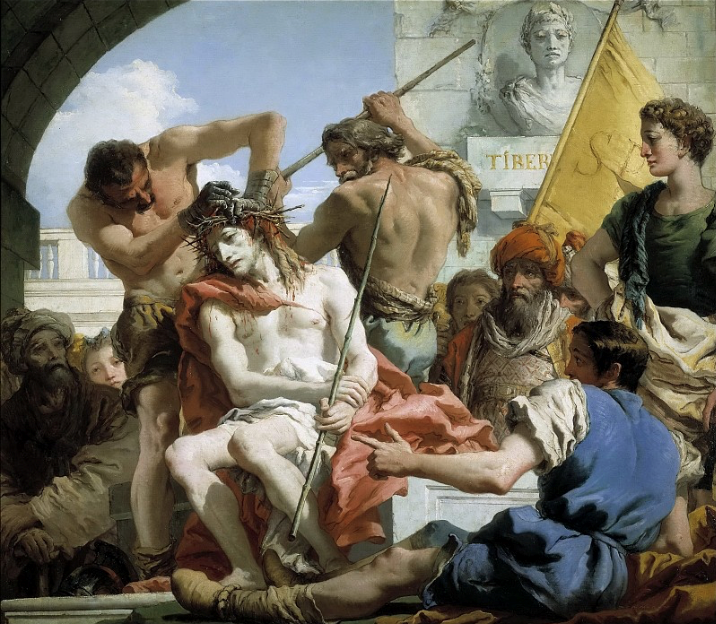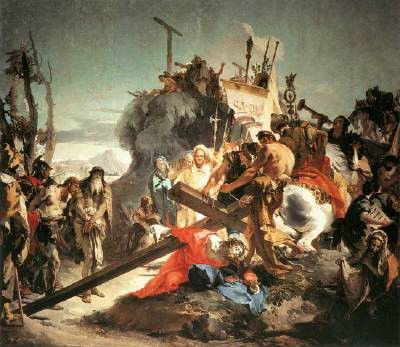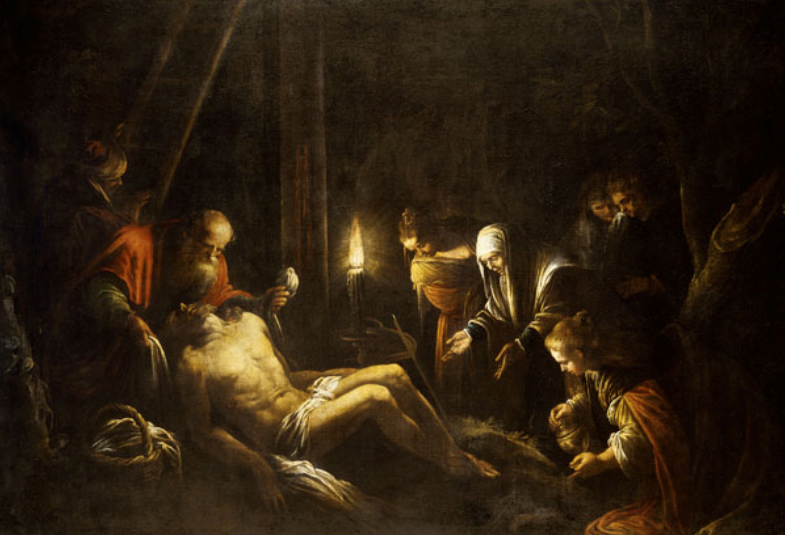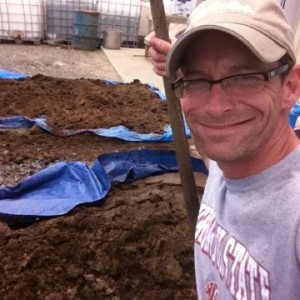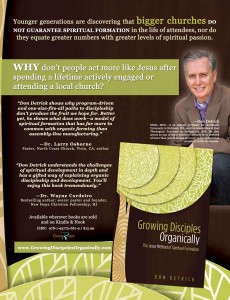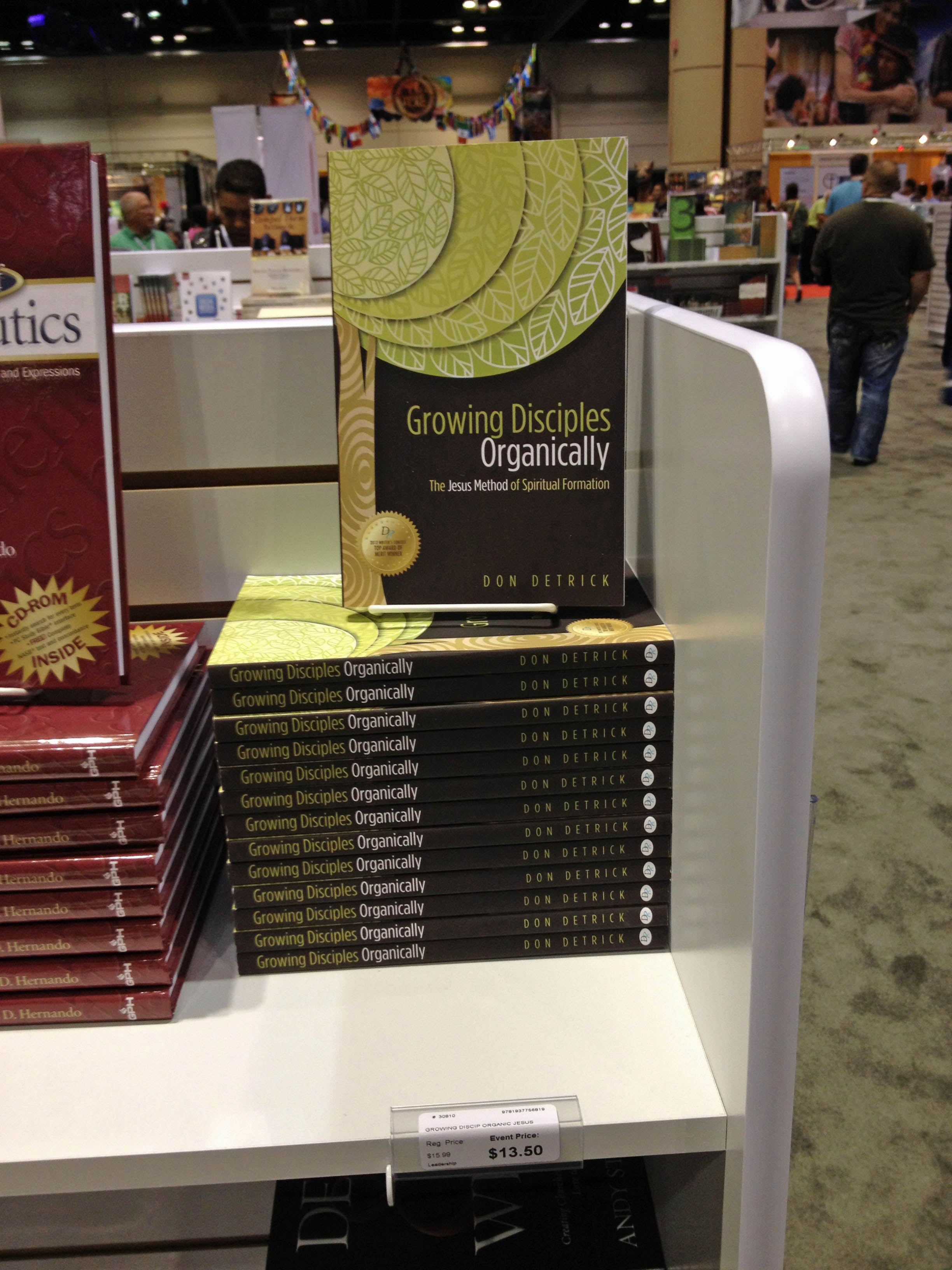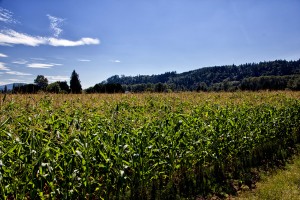
A field of corn near Carnation, WA–made me think of our family farm and dad sending me out to the garden to pick what he called “roasting ears” for mom to cook for dinner. I never could figure out why he called it that when we always shucked the ears and boiled them in water. The only time we roasted corn was as dry seed that dad roasted and salted and called “parched corn.” Not exactly like the snack cornuts, but similar. I remember picking gunny sacks and wheelbarrows full of corn, cooking it, cutting it off the cob, and putting it up in freezer bags by the dozens. On the farm, it was all about preserving the harvest and getting ready for winter. Do any of you have similar memories?
Chapter 13 of the book talks about the importance of Harvest and includes stories about harvest time on the farm, and applications to the Christian life and church. Here is an excerpt from the chapter:
Regardless of the type of farm, the overall operation rises and falls on the harvest. A successful mission or season of farming depends upon the harvest. Staying on mission means focusing on properly executing all of the steps necessary to bring in the harvest. Every farmer knows that if he fails to bring in the harvest, no matter how good he may have been in planting, weeding, or pest control, he has failed.
Although we seldom used the word, virtually everything we did on the farm involved teamwork. Family members, which included at times extended family members, worked together to accomplish tasks that would have been impossible for any one of us to do alone. From bringing in the hay, to building a barn, to cutting and wrapping meat or canning produce or hauling firewood, we worked together.
When there were really big projects to accomplish, such as building a bigger barn or building, we often worked with neighbors as well. Together, we toiled and everyone did his or her part to accomplish the goal. There existed no particular hierarchy, with middle-aged men working alongside teenagers or senior citizens, each doing what he or she could do best according to their own level of skill or expertise. Artisans with years of experience willingly and without cost patiently taught younger members of the team skills that would greatly enhance their lives with the expectation that they, in turn, would train another person down the road. Thus, healthy tradition and craftsmanship continued on in an organic fashion, without bureaucratic paperwork or organizational bylaws.
Jesus showed us how teams work. He never appointed a committee or chaired a board meeting, but he was the undisputed leader. He led by example and did not try to micromanage his disciples’ activities. He empowered them to succeed and encouraged them when they failed and coached them when they needed to take the next steps in the journey.
Teams and Community
The Homestead Act of 1862 promised homesteaders on the American frontier a quarter section of land, 160 acres, if they agreed to build a home at least twelve by fourteen feet, and farm the land for five years. Because of the abundance of cheap land prior to this, many early settlers purchased at least a section of land, 640 acres or one square mile, from the government for $1 an acre.
These new residents of the frontier west were unaccustomed to dwelling on such large properties and did not fully realize the potential pitfalls of isolation. Thus, they often staked out and built their homes right in the middle of their property. When each of the farmers in the township did the same, it meant that every neighbor was at least a mile away from the nearest neighbor, even further if more than a section of land was owned. What this meant in a practical way was that neighbors soon discovered that they were too far away from one another. Particularly during times of emergency, and without telephone lines or any other means of communication, a mile away might as well have been fifty miles.
Recognizing the disadvantages of isolation, settlers began building closer to one another. The notion that one needed to be far away from the neighbors melted in the face of the urgent, pragmatic need to stick together for protection, mutual exchange of services, and socializing. This need for working together as a team was no more fully realized than in times of harvest.
Harvest
Members of agricultural communities join together to bring in the harvest. This is a time-honored core value that recognizes the importance of teamwork and synergy, that the combined effort of the whole, working together, is greater than the sum of the parts working individually. Farmers were community organizers long before the term was popularized by politicians.
As a boy, I have fond memories of helping my elderly neighbor, Grandpa Plake, bring in his hay. I started when I was about ten years old, and continued to work with him until I graduated from high school. Although we were not related, everyone in our neighborhood called these dear folks Grandpa, or “Gramps” and Granny Plake.
“Now Donnie, I’ll tell you what, Mr. Man, we’ve got to get all this hay baled and put up in the barn” he would say as he tried to start his ancient orange Allis Chalmers tractor. “I’ll be needing it to feed the cows come winter.”
Actually, his words were more of a wheeze than anything else, the result of a lifetime of smoking Camel cigarettes. Gramps was a skinny beanpole of a weathered old man, his face as wrinkled as the bark on an ancient oak. He would give you the shirt off his back if he thought you needed it, and I enjoyed helping him (although I sometimes wonder how much help I really was, because the eighty-pound bales weighed almost as much as I did when I began working with him). The sweat poured from our brows as we worked together to get the job done. There is no way I could have done the work by myself, especially at the age of ten. Gramps could never have done it alone either. I think I provided him the moral support and companionship that made it possible. Together, we always brought in the hay. Granny would fix us a big meal at lunch, and we would say grace, honoring the Lord for his provision and another year of harvest.
A harvest is always anticipated. No one plants a crop and expects it to fail. The investment is too great. The Bible uses the metaphor of fruit to describe intentionality. “Be fruitful, and multiply,” God told Adam and Eve (Genesis 1:32). Jesus called us to “go, and bring forth fruit” (John 15:16). “The fruit of the Spirit” (Galatians 5:22) describes the qualities of maturation that result from organic growth.
When it comes to spiritual formation, we should expect to become fruitful followers of Jesus. At any given point in time, an organism is either dying, declining, living, growing, or thriving. The same is true for our spiritual growth. Where do you see yourself in that continuum? What would it take to change? How can you engage more fully in your own spiritual formation so you can expect to be a participant in the harvest? Perhaps you can begin by making a fuller commitment to obedience to God’s Word. Eugene Peterson, translator of The Message version of the Bible, writes:
At age 35 I bought running shoes and began enjoying the smooth rhythms of long-distance running. Soon I was competing in 10K races every month or so, and then a marathon once a year. By then I was subscribing to and reading three running magazines! Then I pulled a muscle and couldn’t run for a couple of months. Those magazines were still all over the house, but I never opened one. The moment I resumed running, though, I started reading again.
That’s when I realized that my reading was an extension of something I was a part of. I was reading for companionship and affirmation of the experience of running. I learned a few things along the way, but mostly it was to deepen my world of running. If I wasn’t running, there was nothing to deepen.The parallel with reading Scripture is striking. If I’m not living in active response to the living God, reading about his creation/salvation/holiness won’t hold my interest for long. The most important question isn’t “What does this mean,” but “What can I obey?” Simple obedience will open up our lives to a text more quickly than any number of Bible studies, dictionaries, and concordances.1
Obedience to Jesus Christ opens the door for growth, and obedience often means working to bring in the harvest. It is understood that proper nourishment, cultivation, and environment are all necessary for sustained growth at every stage of development. Faith life and community lead to fruit, the organic result for harvest. When this is not the case, or when growth is stunted, it’s time to get back to basics. The writer of Hebrews spoke to this issue:
In fact, though by this time you ought to be teachers, you need someone to teach you the elementary truths of God’s word all over again. You need milk, not solid food! Anyone who lives on milk, being still an infant, is not acquainted with the teaching about righteousness. But solid food is for the mature, who by constant use have trained themselves to distinguish good from evil. (Hebrews 5:12–14)
Spiritual formation and the resulting harvest have a lot to do with sowing and reaping. If you don’t invest much on the sowing end of things, you won’t reap much of a harvest. But even a small investment can reap great dividends if we invest in the right things.
Granny and Gramps, mentioned earlier, knew the value of investment in things that truly matter. While you’d never have known it by looking at their humble home and surroundings, they were storing up eternal treasures by investing in people. They raised many of their own grandchildren whose parents had died, and their kindness extended beyond their family to neighbors and even strangers who were welcomed to partake of Granny’s meals.
Granny and Gramps were a team during nearly seventy years of marriage, up until the end of their lives. Everyone thought that Gramps would go first, even though he eventually gave up his smoking habit. But somewhat surprisingly, the spry and seemingly healthy Granny ended up in the hospital and then an extended-care facility because of congestive heart failure. I visited and prayed with them often, and was there the day Granny went to heaven. Grief-stricken Gramps went home and the next morning a grandson found him slumped over in a chair with a smile on his face. Their separation had not been long, as both were reunited at the feet of their Savior. At their combined memorial service, hundreds of relatives, friends, and neighbors paid tribute to this humble couple who teamed up to make a difference in the lives of others.
Like this:
Like Loading...
